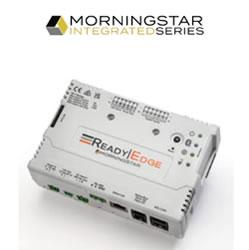Parabolic trough collectors market: Next generation models crank up the heat
New designs, manufacturing techniques, and materials have reset the CSP parabolic trough collector playing field, according to CSP Today's ‘CSP Parabolic Trough Report: Costs and Performance'.
The CSP parabolic trough collector market's brief history has been characterised by a tug of war between three main collector types. Among the nineteen collectors reviewed in the latest CSP Today report, Torque-Box collector types dominate, followed by Torque-Tube and Space Frame collector types, respectively.
Despite many of these models having yet to be demonstrated in the field, technology developers have already moved on to second and third generation models, in a quest to drive up efficiency and scale down cost.
Dynamic market
The long development cycle associated with parabolic troughs (engineering, testing, validation and field demonstration) makes it crucial for original equipment manufacturers (OEMs) to maintain momentum on innovation.
"Technical innovations contribute to cost abatement by increasing plant efficiency or by reducing capital cost", says the report's author, Carlos Marquez-Salazar.
In addition, a dynamic market retains investment appeal, notes CSP OEM SkyFuel's chief technology officer Randy Gee.
Innovative designs raise the bar
There is little doubt that the next generation of collectors is turning up the heat in the parabolic trough collector space. New models raise the bar on efficiency via increased apertures, operating temperatures, reduced land requirement, logistics, and cost.
Meanwhile commodity prices will dictate which models dominate the market in future. According to the report, aluminum space frames will play an increasing role in CSP trough design going forward, displacing the historically preferred steel Torque-Tube and Torque-Box designs as steel prices increase and aluminum prices decrease.
Gossamer Space Frames' second-generation Lat-2 model uses 30% less aluminum, 35% fewer components, and 80% fewer fasteners, making it lighter to ship and quicker to install. Scheduled to hit the market this year, the Lat-2 boasts a 30+ year life expectancy and a 9 metre collector aperture.
Skyfuel's low-cost, lightweight, easy-to-assemble Sky Trough also incorporates an aluminum Space Frame structure, as well as a glass-free reflector material, ReflecTech.
Gee says that Skyfuel's second-generation SkyTrough, (in design phase), is expected to have an aperture twice that of the original Sky Trough at 8-9 metres, and is expected to operate at 500°C - some 100°C above the operating temperature of most other trough technologies.
Curbing the cost drivers
From a design perspective, the report identifies increased power block efficiency and reduced parasitic losses as being the most efficient means of reducing cost.
Lessons can also be taken from the automotives sector, which selects materials and manufacturing processes on the basis of increased productivity and profitability.
"With profile extrusion, sheet-metal forming and embossing, structural optimization can be achieved and material usage reduced", explains Salazar.
"The ability to salvage the collector upon decommissioning represents a potential capital recovery of several million dollars," he adds.
Providing a rigourous assessment and comparison of all the latest parabolic trough models, manufacturing techniques, and market drivers, the CSP Parabolic Trough Report: Costs and Performance' offers invaluable insight into the future shape of the global parabolic trough collector market.
Featured Product

MORNINGSTAR - ReadyEdge
The ReadyEdgeTM (RE-1) accessory is an intelligent system controlling and reporting device meant to make monitoring your solar energy system more transparent. Enabling access to LiveViewTM 2.0 and Morningstar Solar ConnectTM, ReadyEdge provides data from all compatible Morningstar devices in your system. It is designed to be paired with the three ReadyBlock options, up to six total, with the possibility to use multiple ReadyShunts and ReadyRelays. The ReadyEdge is compatible with select Morningstar products.
